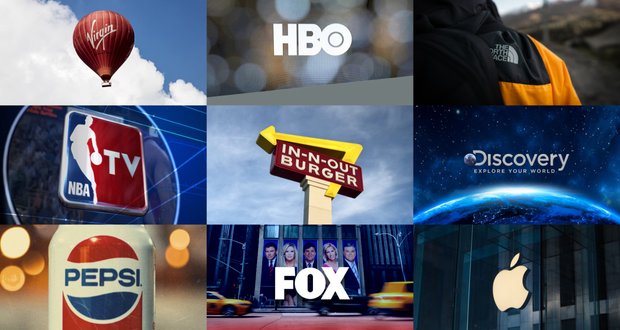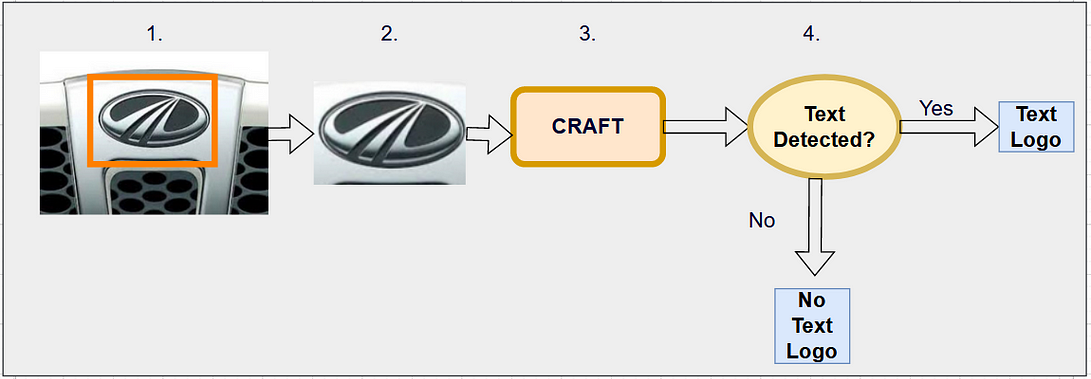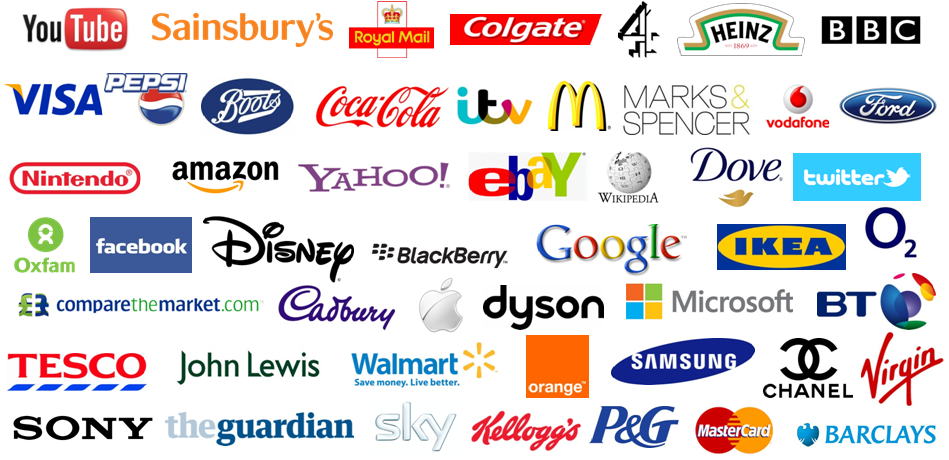Have you ever looked at a logo and instantly recognized the brand it represents? That’s the power of brand logo recognition. In today’s competitive business landscape, establishing a strong brand presence is crucial, and a well-designed logo plays a significant role in achieving that goal. In this article, we’ll explore the importance of brand logo recognition, delve into the psychology behind it, discuss effective logo design principles, and examine how it impacts marketing strategies. So, let’s dive in and uncover the secrets behind successful brand logo recognition.
Importance of Brand Logo Recognition

Brand logo recognition holds immense significance in today’s cluttered marketplace. When consumers can quickly identify a brand by its logo, it fosters familiarity, trust, and loyalty. A recognizable logo sets a brand apart from competitors and helps establish a strong market position. It acts as a visual shorthand, triggering positive associations and evoking emotions related to the brand. Additionally, a well-recognized logo creates a sense of consistency and professionalism, enhancing the overall brand image.
Factors Affecting Brand Logo Recognition
Several factors influence the recognition and memorability of a brand logo. Simplicity is key, as complex logos may confuse or fail to resonate with audiences. A memorable logo should also be distinctive, enabling it to stand out among competitors. Consistency in logo usage across various touchpoints helps reinforce recognition. Furthermore, adaptability is essential to ensure the logo remains recognizable across different mediums and sizes.
The Psychology Behind Logo Recognition
Understanding the psychology behind brand logo detection can provide valuable insights into consumer behavior. Human brains are wired to process and remember visuals more efficiently than text. Logos tap into our emotions and memory centers, triggering associations with past experiences, values, and preferences. Color, shape, and typography all contribute to the subconscious impact a logo has on individuals, allowing brands to communicate messages and establish emotional connections.
Designing an Effective Brand Logo
Creating an effective brand logo requires careful consideration of various design elements. The logo should align with the brand’s personality, values, and target audience. A strong concept and a unique visual representation can make a logo memorable. Colors play a significant role, as they evoke specific emotions and influence brand perception. Typography choices also impact how a logo is perceived, with different fonts conveying distinct tones and characteristics.
Colors and Logo Detection
Colors have the power to evoke emotions and influence consumer behavior. Each color carries specific associations and meanings. For example, blue often represents trust and reliability, while red signifies energy and excitement. By strategically using colors in a logo, brands can convey their desired message and evoke the desired emotional response in their audience.
Typography and Logo Recognition
Typography is another critical aspect of logo design. The choice of fonts conveys various tones and personalities. Serif fonts often exude a sense of tradition and elegance, while sans-serif fonts appear modern and minimalistic. Script fonts evoke a sense of creativity or luxury. Combining typography with other design elements can create a harmonious and memorable logo.
Logo Detection in Marketing Strategies

Brand logo recognition plays a vital role in marketing strategies. A well-recognized logo helps create brand recall and reinforces brand messaging across various marketing channels. Consistent logo usage in advertisements, social media campaigns, and packaging strengthens brand identity and facilitates easier brand recognition. By incorporating the logo strategically into marketing collateral, businesses can enhance their overall marketing effectiveness.
Logo Detection and Recognition in Digital Marketing
In the digital era, brand logo detection has taken on new dimensions. Online platforms offer vast opportunities for brands to showcase their logos and establish recognition. Websites, social media profiles, email marketing, and digital advertisements all present avenues for displaying logos to a wide audience. Optimizing logo placement and ensuring it remains consistent across digital touchpoints are crucial for successful brand logo recognition in the digital realm.
Enhancing Brand Logo Recognition through Social Media
Social media platforms have become powerful tools for boosting brand logo detection. Businesses can leverage these platforms to showcase their logos, engage with their audience, and create viral content that spreads brand awareness. By actively sharing content related to their logos and encouraging user-generated content, brands can foster a community and increase logo visibility.
Brand Logo Detection and Brand Loyalty
A recognizable logo can foster brand loyalty among consumers. When customers consistently associate positive experiences with a brand logo, they develop a sense of trust and affinity. This emotional connection can lead to repeat purchases, recommendations, and advocacy. By prioritizing logo recognition and ensuring positive brand experiences, businesses can cultivate long-term customer loyalty.
Measuring and Tracking Logo Recognition
Measuring the impact of brand logo recognition is essential to gauge its effectiveness. Surveys, focus groups, and market research can provide insights into consumer recognition and perception of logos. Additionally, tracking logo visibility in marketing campaigns, social media metrics, and website analytics can help monitor the reach and impact of logos.
Examples of Successful Logo Detection
Numerous brands have achieved exceptional logo recognition, becoming synonymous with their logos. Think of iconic brands like Apple, Nike, and Coca-Cola, whose logos are instantly recognizable worldwide. These companies have invested in creating timeless, memorable logos that encapsulate their brand essence. By studying successful examples, businesses can gain inspiration for their own logo design and recognition efforts.
Challenges in Logo Detection

While brand logo recognition offers significant benefits, it also comes with challenges. In an oversaturated market, standing out and creating a distinctive logo can be difficult. Ensuring consistency across different platforms and mediums can also be a challenge. Additionally, logo recognition is not an overnight process; it requires consistent efforts and effective marketing strategies to achieve widespread recognition.
Case Studies
Case Study 1: Nike – The Swoosh That Speaks
Nike’s Swoosh logo, designed in 1971, is a prime example of a logo achieving iconic status. Initially costing just $35 to create, the Swoosh now represents an empire worth billions. Nike leveraged simplicity, consistency, and strategic marketing to embed the logo in consumer minds. Coupled with high-profile endorsements from athletes like Michael Jordan and Serena Williams, the logo became synonymous with performance and aspiration.
Case Study 2: McDonald’s – The Golden Arches
The Golden Arches of McDonald’s are one of the most recognized logos globally, thanks to the brand’s consistent use of the logo in over 100 countries. Their “I’m Lovin’ It” campaign further strengthened logo recognition by linking it with catchy jingles, bright colors, and family-friendly imagery. This strategy created a strong emotional connection with consumers across generations.
Case Study 3: Apple – The Bite of Innovation
Apple’s bitten apple logo is synonymous with innovation and premium quality. Through consistent branding, product excellence, and minimalist aesthetics, Apple has transformed its logo into a symbol of technological leadership. The logo’s simplicity allows for versatility, making it instantly recognizable across all mediums, from devices to advertisements.
Influential Quotes
Jeff Bezos (Founder of Amazon):
“Your brand is what other people say about you when you’re not in the room.”
The power of a logo lies in its ability to encapsulate your brand’s essence and leave a lasting impression.Paul Rand (Renowned Graphic Designer):
“A logo doesn’t sell (directly), it identifies.”
This highlights the core purpose of a logo – to create instant recognition and differentiation in the marketplace.David Airey (Logo Design Expert):
“A great logo doesn’t just create recognition; it creates connection.”
Logos become more than symbols when they resonate emotionally with the audience.Marty Neumeier (Branding Expert):
“A brand is not what you say it is. It’s what they say it is.”
Logos are tools to shape perception, but the real power comes from what they represent to consumers.
Conclusion
Brand logo recognition is a powerful tool for businesses seeking to establish a lasting impression on their audience. A well-designed and recognizable logo enhances brand awareness, builds trust, and influences consumer behavior. By understanding the psychology behind logo recognition, incorporating effective design principles, and leveraging various marketing channels, businesses can unlock the potential of logo recognition and drive business growth.
Ready to enhance your brand’s logo recognition and take your business to the next level? Request a demo from AIM Technologies, a leader in logo design and marketing solutions. Our team of experts is ready to assist you in creating a captivating logo that resonates with your target audience.
FAQ
1. How long does it take for a brand logo to become recognizable?
- The time it takes for a brand logo to become recognizable varies depending on various factors, such as brand exposure, marketing efforts, and consumer engagement. It can take months or even years of consistent branding to achieve widespread logo recognition.
2. Can change a logo impact detection negatively?
- Changing a logo can have both positive and negative impacts on brand recognition. While a well-executed logo redesign can refresh a brand’s image and attract attention, it may also cause temporary confusion among existing customers. Proper communication and strategic implementation are crucial when undergoing a logo change to minimize any negative effects.
3. How can social media contribute to logo detection?
- Social media platforms provide an excellent opportunity to showcase your brand logo and increase recognition. By consistently using your logo in profile pictures, posts, and advertisements, you can reinforce its visibility among your target audience. Engaging with followers, encouraging user-generated content, and running social media campaigns centered around your logo can further enhance recognition and brand loyalty.
4. What role does color play in logo recognition?
- Color plays a significant role in logo detection, as different colors evoke specific emotions and associations. Careful consideration of color psychology can help create a logo that effectively communicates your brand’s values and personality. Choosing colors that align with your brand’s message and target audience can enhance recognition and create a memorable visual identity.
5. How can measuring logo detection be beneficial?
- Measuring brand logo recognition allows you to assess the effectiveness of your branding efforts and make data-driven decisions. Surveys, market research, and tracking logo visibility across different marketing channels can provide valuable insights into consumer recognition and perception of your logo. This information can guide future branding strategies and help you optimize logo visibility and impact.




